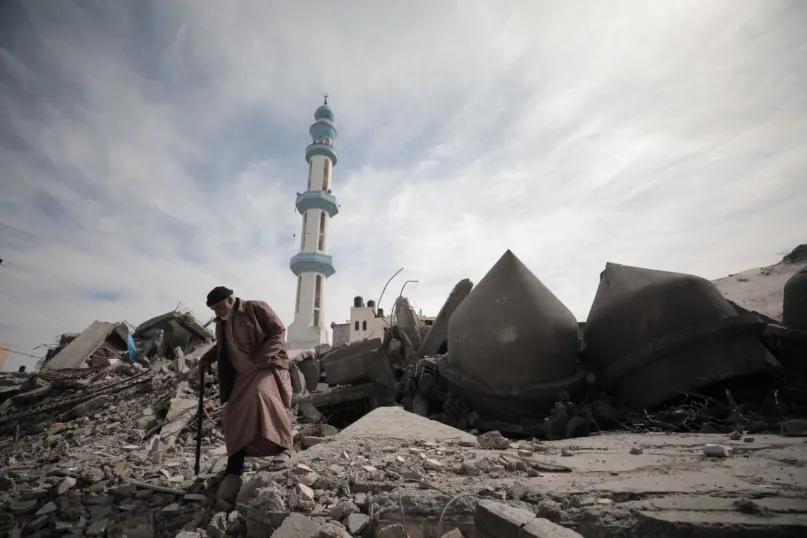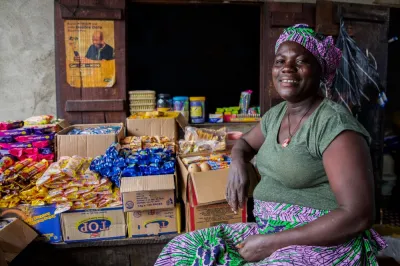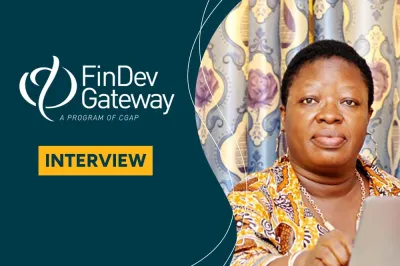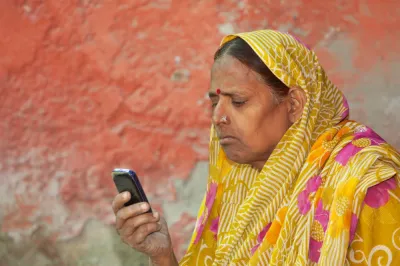Microfinance in Gaza Will Play a Crucial Role in the Post-Conflict Economic Recovery

The human toll of the ongoing conflict is significant, with tens of thousands of people killed and injured to date. UNRWA has registered 1.7 million people – 75% of the Gaza Strip’s population - as internally displaced, and more than a million have lost their homes. Food insecurity and malnutrition are widespread, with more than half the population on the verge of famine. All children are out of school, as the education system has collapsed, and an estimated 17,000 children have been separated from their families.
Rapidly deteriorating conditions and destroyed infrastructure
In addition to the human toll, a vast amount of Gaza's vital infrastructure, including roads, hospitals, schools, universities, government buildings, economic and agricultural facilities, has been destroyed in the conflict. The cost of the damage to vital infrastructure has been estimated at a staggering $18.5 billion. This figure is equivalent to 97% of the gross domestic product of the West Bank and Gaza Strip combined in 2022. According to United Nations forecasts, the total cost of reconstruction is estimated to reach “at least” $40 to $50 billion.
Looking towards economic recovery and a role for microfinance
Sooner or later - and I hope it will be sooner - the conflict will end in the Gaza Strip. At that point in time, the survivors will face a life of difficulties beyond imagining. Only with the support of the international community will the survivors be able to begin rebuilding their lives. The public sector, international organizations, the private sector, banks and microfinance institutions (MFIs) must all play a role.
For economic recovery to begin, job creation is essential, laying the groundwork for stability, progress and societal security. SMEs represent an important leverage for recovery in this regard. While the formal sector usually experiences a slowdown in growth after conflict, the informal sector tends to grow rapidly as people turn to income-generating activities and small enterprises to provide household income. Microfinance services will therefore be important to help the reestablishment and growth of small businesses during the post-conflict period.
Palestinian microfinance before the conflict
MFIs in Palestine have been regulated by the Palestine Monetary Authority (Palestinian Central Bank) for more than a decade and are considered an essential element in supporting financially marginalized groups and promoting financial inclusion. Before the end of 2023, according to the Palestinian Network for Small and Microfinance, there were nine regulated non-deposit MFIs between the West Bank and Gaza, with 76,000 active borrowers and a portfolio of $367 million. Seven of these MFIs had operations in Gaza, where there were 21,600 active clients and a total portfolio of $54 million.
Even though Gazans represented 41% of the total Palestinian population in the two territories, only 28% of clients were from Gaza and less than 15% of the total Palestinian microfinance portfolio was invested in the Gaza Strip, due to greater credit, operational and regulatory risks there, in addition to political risk and instability. Average loan size was less than half that of the West Bank, with stricter collateral requirements due to the increased risk.
The portfolio at risk (PAR>30 days) before October 2023 was around 8%. Women represented 30% of all active borrowers. Prior to the conflict, all Palestinian MFIs were financially healthy and self-sustaining, following periods of support through donations and grants.
The effects of conflict on microfinance in Gaza
Now, eight months after the conflict began, it is expected that these institutions will lose 100% of their total $54 million portfolio in Gaza, with a very small possibility of compensating for these losses. MFIs have completely stopped all lending activity, including receiving repayments. Instead, these institutions are preparing for the post-conflict recovery phase by beginning to assess the damage to their assets and organize plans for restructuring and refinancing.
At the beginning of the conflict, there had been some hopes and initial thoughts about restructuring and refinancing of the pre-conflict portfolio. However, as the conflict continued and the destruction deepened, the MFIs have become convinced that there is no potential for such action. Given the nature of the situation, restructuring and financing operations for the pre-conflict portfolio will likely be completely excluded, as those loans will be almost impossible to recover.
How to begin the work of post-conflict microfinance in Gaza
Before the work of economic recovery can begin, there must be an acceptable level of security in Gaza, with people settled either in their homes or in refugee camps. Only then can microfinance begin to support recovery and growth, ensuring the availability of cash, functioning markets and some services as limited economic activity gets restarted.
To get started, MFIs in post-conflict Gaza should first conduct comprehensive and detailed market and statistical research to be able to understand their target clients’ situations and design appropriate financial services for them. For example, loans granted for agricultural activities must have long loan terms with sufficient grace period. In general, financial products offered in the post-conflict period must be flexible and intelligent in terms of guarantees, prices, terms and grace periods.
A strong commitment to social performance, responsible finance and consumer protection principles will be key, as the population being served will be extremely vulnerable and in need of support after the conflict ends. While MFIs will play an important role in the recovery, this role must be managed wisely so as not to burden families with debt if they are unable to meet basic needs. There will likely be a pressing need at first for grants instead of loans to support recovery for those families who have lost everything.
In these situations, it is important to make a clear distinction between grants and loans, as the mixing of these two interventions in the past has caused confusion and great difficulties for microfinance providers, leading to misunderstandings about MFIs’ role and business model. Relief programs must be transparent, with clear objectives and target groups, and must never use MFIs as a channel for distributing grants and humanitarian aid.
On the funding side, MFIs should be supported with the necessary capital for capital expenditures and re-lending, and this support should be comprehensive and continuous, especially during the first three years. Blended finance and public-private partnerships can be very effective approaches.
Looking ahead to rebuilding
Those of us who work in the microfinance sector may not be able to stop the conflict or control its outcome. But once it ends, we can dedicate ourselves to the challenging task of rebuilding the region and creating hope for its people.



The human cost of the conflict is devastating. Rebuilding Gaza's infrastructure is essential, but so is investing in its people. The focus on responsible lending and consumer protection is key. Microfinance can help create jobs and get the economy moving again. Microfinance shouldn't burden families further. Grants may be necessary in the initial stages. #Peacebuilding
Leave a comment